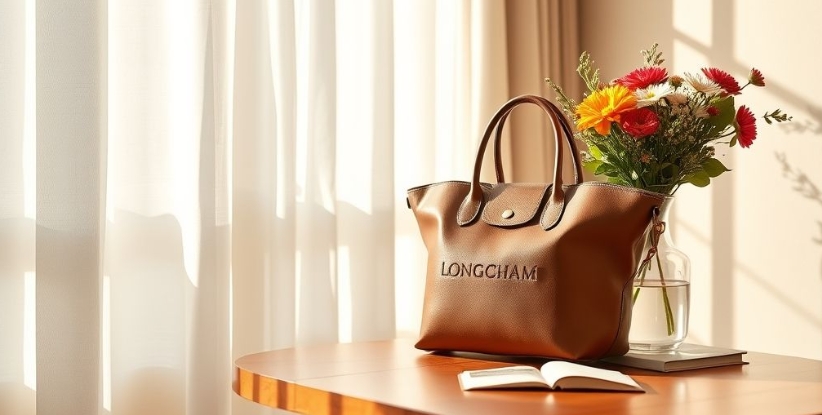longchamp
A Daughter’s Discovery of Longchamp Bags
As I sifted through the attic, surrounded by dusty boxes and forgotten trinkets, I felt like I was peeling back layers of my parents’ lives. The air was thick with the scent of old paper and mothballs, and every item I touched seemed to carry a story. My task was simple: help Mom and Dad declutter before they downsized to a smaller place. But as I dug deeper into their past, I found something unexpected—a collection of Longchamp bags tucked away in a corner, each one a quiet testament to their timeless style and, as I’d come to learn, a surprising nod to sustainable design.
The first bag I pulled out was a classic Longchamp bag Canada tote, its nylon fabric still vibrant despite years of storage. I ran my fingers over the smooth leather handles, worn but intact, and marveled at how well it had held up. Mom must have used this for everything—grocery runs, work, maybe even weekend trips. Longchamp’s Le Pliage line, I later learned, is designed with durability in mind, using lightweight yet sturdy materials that resist wear and tear. The nylon isn’t just practical; it’s recyclable, a small but meaningful choice that reduces waste compared to leather-heavy alternatives. Holding it, I could see why Mom loved it—it was functional yet chic, a balance that felt so true to her.
Another box revealed a smaller crossbody bag, its sleek design screaming understated elegance. I imagined Dad buying this for Mom during one of their early anniversaries, a gift that said, “I know you.” The bag’s clean lines and neutral color made it versatile, the kind of piece that could transition from a day at the office to a dinner out. What struck me was how Longchamp’s design philosophy seemed to prioritize timelessness over fleeting trends. These bags weren’t chasing the latest fad; they were built to last, both in style and substance. That’s sustainability in its own way—creating products that don’t need replacing every season.
As I sorted through more items, I found a Longchamp Canada backpack, slightly scuffed but still functional. It reminded me of family picnics when I was a kid, Mom carrying snacks and sunscreen in it while chasing me around the park. The backpack’s foldable design was a revelation—Longchamp’s commitment to practicality shone through in how compact it could become, perfect for travel or storage. I read later that the brand uses eco-conscious production methods, like minimizing water and energy use in manufacturing. It’s not something Mom or Dad would’ve thought about back then, but it made me appreciate the bags even more. They weren’t just accessories; they were part of a thoughtful design process that considered the planet.
The more I handled these bags, the more I saw them as snapshots of my parents’ lives. There was a clutch, probably from a rare date night, its leather flap still soft and supple. Longchamp’s use of high-quality leather, sourced responsibly, ensures that even their smaller pieces age gracefully. I could picture Mom tucking it under her arm, feeling a little glamorous despite her usual no-fuss demeanor. The clutch’s minimalist design felt so modern, even now, decades later. That’s the thing about Longchamp—their pieces don’t scream for attention, but they hold their own in any era.
I started to wonder why these bags were tucked away, unused for so long. Maybe Mom and Dad upgraded to newer styles, or maybe life got too busy for them to notice what they’d left behind. But as I folded the tote and placed it back in its dust bag, I felt a pang of gratitude. These weren’t just bags; they were part of my family’s history, carrying memories of trips, errands, and moments I’d never fully know. The fact that they were still in such great condition spoke to Longchamp’s craftsmanship. Their focus on sustainable materials and enduring design meant these pieces could still be used today—or passed down to me.
By the time I finished sorting, I’d decided to keep a few of the bags for myself. The tote, especially, felt like something I could incorporate into my own life. It’s versatile enough for my daily commute or a weekend getaway, and knowing it’s made with eco-friendly materials makes it even more appealing. Longchamp’s approach to sustainability—using recyclable nylon, reducing production waste, and creating long-lasting products—aligns with how I’m trying to live more consciously. Plus, there’s something special about carrying a bag that once belonged to Mom, like a quiet connection across time.
As I packed up the attic, I couldn’t help but smile at how these Longchamp Canada bags had outlasted so many other things. Trends come and go, but these pieces remained relevant, their design rooted in both style and responsibility. I dusted off my hands, closed the attic door, and made a mental note to ask Mom about the stories behind each bag. For now, I was content knowing I’d uncovered something meaningful—not just relics of the past, but reminders that good design, done right, can stand the test of time.
